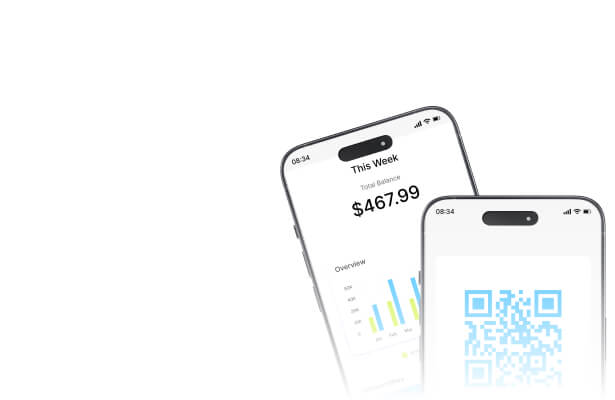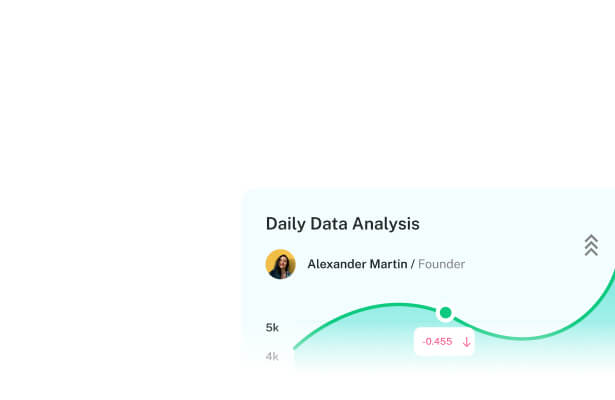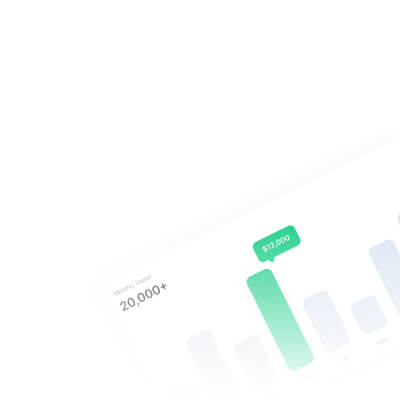Designing Intuitive Interfaces for Industrial Applications
Learn how to create user-friendly interfaces for complex industrial applications that improve productivity and reduce training time.

Industrial applications present unique challenges for user interface design. Unlike consumer applications, industrial interfaces must serve users in high-stress environments, often with limited time for decision-making and potentially dangerous consequences for errors. This article explores the principles and best practices for designing intuitive interfaces for industrial applications.
The Unique Challenges of Industrial UI/UX
Industrial environments differ significantly from office or consumer settings. Users often work in challenging conditions with specific constraints and requirements.
Key Challenges:
- Environmental Factors: Harsh lighting, noise, vibration, and extreme temperatures
- Safety Critical: Errors can have serious consequences for safety and production
- Time Pressure: Operators often need to make quick decisions
- Limited Training: Users may have minimal time for learning new interfaces
- Multiple User Types: From operators to maintenance personnel to managers
Core Design Principles for Industrial Interfaces
1. Clarity and Simplicity
Industrial interfaces must be immediately understandable, even in stressful situations. Every element should have a clear purpose and meaning.
Best Practices:
- Use clear, unambiguous icons and labels
- Minimize cognitive load by reducing unnecessary information
- Employ consistent visual language throughout the interface
- Use high contrast colors for better visibility
- Implement clear visual hierarchies
2. Error Prevention and Recovery
In industrial settings, preventing errors is more important than making them easy to fix. The interface should guide users away from dangerous actions.
/* Example: Warning state styling */
.warning-button {
background-color: #ff6b35;
color: white;
border: 2px solid #ff6b35;
padding: 12px 24px;
border-radius: 6px;
font-weight: 600;
cursor: pointer;
transition: all 0.3s ease;
}
.warning-button:hover {
background-color: #e55a2b;
border-color: #e55a2b;
transform: scale(1.05);
}
.warning-button:active {
transform: scale(0.95);
}
/* Confirmation dialog styling */
.confirmation-dialog {
background: rgba(0, 0, 0, 0.8);
position: fixed;
top: 0;
left: 0;
width: 100%;
height: 100%;
display: flex;
align-items: center;
justify-content: center;
z-index: 1000;
}
.confirmation-content {
background: white;
padding: 24px;
border-radius: 8px;
max-width: 400px;
text-align: center;
box-shadow: 0 4px 20px rgba(0, 0, 0, 0.3);
}3. Accessibility and Usability
Industrial interfaces must be accessible to users with varying abilities and work in diverse environmental conditions.
Accessibility Guidelines:
- Use large, readable fonts (minimum 16px for body text)
- Ensure sufficient color contrast (4.5:1 minimum for normal text)
- Provide alternative text for all images and icons
- Support keyboard navigation for all functions
- Include audio feedback for critical actions
Design Patterns for Industrial Applications
1. Dashboard Design
Dashboards are central to industrial applications, providing operators with critical information at a glance.
<!-- Example: Industrial Dashboard Layout -->
<div class="industrial-dashboard">
<header class="dashboard-header">
<h1 class="dashboard-title">Production Line Control</h1>
<div class="dashboard-status">
<span class="status-indicator status-running">RUNNING</span>
<span class="current-time">14:32:15</span>
</div>
</header>
<div class="dashboard-grid">
<div class="widget widget-critical">
<h3 class="widget-title">Temperature</h3>
<div class="widget-value">185°C</div>
<div class="widget-status">Normal Range</div>
</div>
<div class="widget widget-warning">
<h3 class="widget-title">Pressure</h3>
<div class="widget-value">2.8 bar</div>
<div class="widget-status">High</div>
</div>
<div class="widget widget-normal">
<h3 class="widget-title">Speed</h3>
<div class="widget-value">120 RPM</div>
<div class="widget-status">Optimal</div>
</div>
</div>
</div>2. Alarm and Alert Systems
Effective alarm systems are crucial for industrial safety. They must be attention-grabbing without being overwhelming.
/* Alarm system styling */
.alarm-critical {
background: linear-gradient(45deg, #ff0000, #cc0000);
color: white;
animation: pulse-critical 1s infinite;
border: 3px solid #ff0000;
box-shadow: 0 0 20px rgba(255, 0, 0, 0.5);
}
.alarm-warning {
background: linear-gradient(45deg, #ffa500, #ff8c00);
color: white;
animation: pulse-warning 2s infinite;
border: 2px solid #ffa500;
}
.alarm-info {
background: linear-gradient(45deg, #0066cc, #0052a3);
color: white;
border: 2px solid #0066cc;
}
@keyframes pulse-critical {
0%, 100% { opacity: 1; }
50% { opacity: 0.7; }
}
@keyframes pulse-warning {
0%, 100% { opacity: 1; }
50% { opacity: 0.8; }
}3. Navigation and Information Architecture
Industrial applications often have complex workflows that must be navigable by users with different roles and expertise levels.
Navigation Principles:
- Breadcrumb Navigation: Help users understand their location in the system
- Quick Access: Provide shortcuts to frequently used functions
- Progressive Disclosure: Show information at appropriate levels of detail
- Consistent Layout: Maintain predictable interface patterns
User Research and Testing in Industrial Contexts
1. Understanding User Workflows
Effective industrial interface design begins with deep understanding of user workflows and pain points.
Research Methods:
- Contextual Inquiry: Observe users in their actual work environment
- Task Analysis: Break down complex industrial processes
- User Interviews: Understand user needs and frustrations
- Workflow Mapping: Document current processes and identify improvement opportunities
2. Usability Testing
Testing industrial interfaces requires special considerations due to the complexity and safety implications of the systems.
// Example: Usability testing metrics tracking
class UsabilityMetrics {
constructor() {
this.metrics = {
taskCompletionTime: [],
errorCount: [],
userSatisfaction: [],
cognitiveLoad: []
};
}
recordTaskCompletion(taskId, startTime, endTime, errors) {
const completionTime = endTime - startTime;
this.metrics.taskCompletionTime.push({
taskId,
time: completionTime,
timestamp: new Date()
});
this.metrics.errorCount.push({
taskId,
errors,
timestamp: new Date()
});
}
recordUserSatisfaction(taskId, rating, comments) {
this.metrics.userSatisfaction.push({
taskId,
rating,
comments,
timestamp: new Date()
});
}
generateReport() {
const avgCompletionTime = this.metrics.taskCompletionTime.reduce(
(sum, task) => sum + task.time, 0
) / this.metrics.taskCompletionTime.length;
const totalErrors = this.metrics.errorCount.reduce(
(sum, task) => sum + task.errors, 0
);
const avgSatisfaction = this.metrics.userSatisfaction.reduce(
(sum, task) => sum + task.rating, 0
) / this.metrics.userSatisfaction.length;
return {
averageCompletionTime: avgCompletionTime,
totalErrors: totalErrors,
averageSatisfaction: avgSatisfaction,
recommendations: this.generateRecommendations()
};
}
}Technology Considerations
1. Touch Interface Design
Many industrial applications use touch interfaces, which require special design considerations.
Touch Interface Guidelines:
- Minimum touch target size of 44px × 44px
- Provide visual feedback for all touch interactions
- Design for gloved hands (larger targets, simpler gestures)
- Consider environmental factors (glare, moisture, vibration)
- Implement haptic feedback where appropriate
2. Responsive Design for Industrial Applications
Industrial interfaces may need to work across different screen sizes and orientations.
/* Responsive design for industrial interfaces */
.industrial-interface {
display: grid;
grid-template-columns: repeat(auto-fit, minmax(300px, 1fr));
gap: 16px;
padding: 16px;
}
.widget {
min-height: 200px;
padding: 16px;
border-radius: 8px;
box-shadow: 0 2px 8px rgba(0, 0, 0, 0.1);
}
/* Large screens - more detailed layout */
@media (min-width: 1200px) {
.industrial-interface {
grid-template-columns: repeat(4, 1fr);
}
.widget {
min-height: 250px;
padding: 20px;
}
}
/* Medium screens - balanced layout */
@media (max-width: 1199px) and (min-width: 768px) {
.industrial-interface {
grid-template-columns: repeat(2, 1fr);
}
}
/* Small screens - stacked layout */
@media (max-width: 767px) {
.industrial-interface {
grid-template-columns: 1fr;
}
.widget {
min-height: 150px;
padding: 12px;
}
}Performance and Reliability
1. Interface Responsiveness
Industrial applications cannot afford interface lag or unresponsiveness, especially in safety-critical situations.
Performance Guidelines:
- Target response times under 100ms for user interactions
- Implement progressive loading for complex data
- Use efficient rendering techniques (virtual scrolling, lazy loading)
- Optimize for low-bandwidth or intermittent connectivity
- Implement offline functionality where possible
2. Error Handling and Recovery
Robust error handling is essential for industrial applications where system failures can have serious consequences.
// Example: Error handling for industrial interfaces
class IndustrialErrorHandler {
constructor() {
this.errorLog = [];
this.recoveryStrategies = new Map();
}
handleError(error, context) {
// Log error with context
this.errorLog.push({
error: error.message,
context,
timestamp: new Date(),
stack: error.stack
});
// Determine error severity
const severity = this.assessSeverity(error, context);
// Execute recovery strategy
if (this.recoveryStrategies.has(error.type)) {
this.recoveryStrategies.get(error.type)(error, context);
}
// Notify user appropriately
this.notifyUser(error, severity);
// Report to monitoring system
this.reportToMonitoring(error, severity);
}
assessSeverity(error, context) {
if (context.safetyCritical) return 'CRITICAL';
if (context.productionAffecting) return 'HIGH';
if (context.userFacing) return 'MEDIUM';
return 'LOW';
}
notifyUser(error, severity) {
const notification = {
type: severity.toLowerCase(),
message: this.getUserFriendlyMessage(error),
action: this.getSuggestedAction(error)
};
this.displayNotification(notification);
}
}Future Trends in Industrial UI/UX
1. Augmented Reality (AR) Interfaces
AR is becoming increasingly important in industrial applications, providing contextual information overlay on physical equipment.
2. Voice and Gesture Control
Hands-free operation is valuable in industrial environments where users may be wearing protective equipment or handling materials.
3. Adaptive Interfaces
Machine learning can help create interfaces that adapt to individual user preferences and work patterns.
Conclusion
Designing intuitive interfaces for industrial applications requires a deep understanding of user needs, environmental constraints, and safety requirements. By following established principles and best practices, designers can create interfaces that improve productivity, reduce errors, and enhance user satisfaction.
The key to success is treating industrial interface design as a specialized discipline that requires careful consideration of the unique challenges and constraints of industrial environments. This includes thorough user research, iterative testing, and ongoing refinement based on real-world usage.


